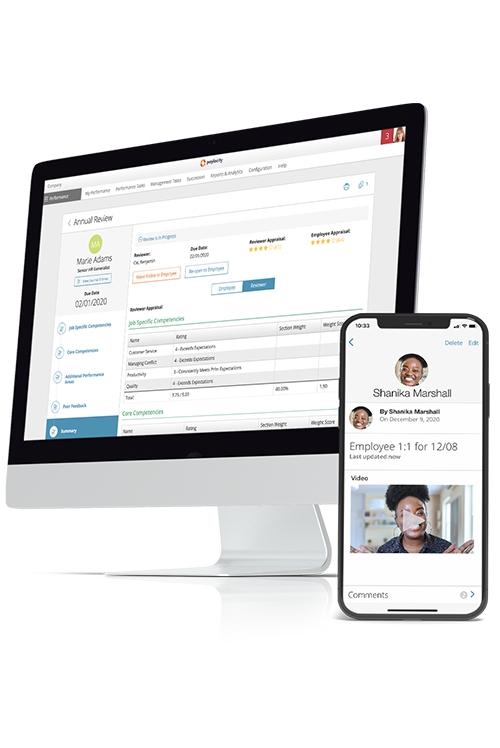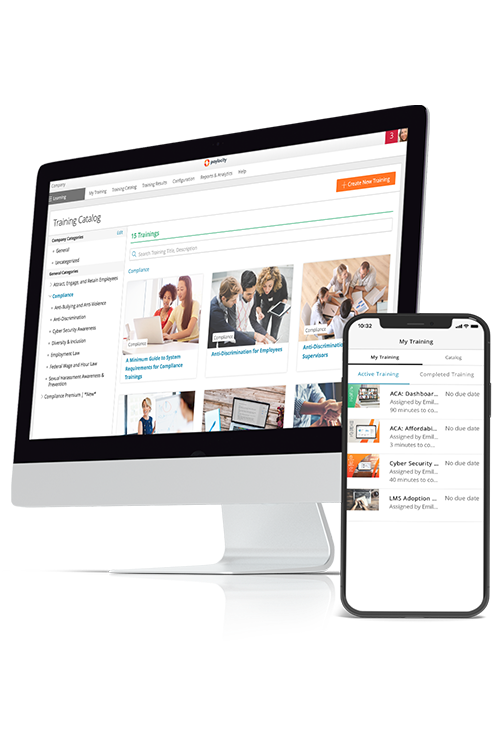Related Learning

Employee Coaching Strategies & Best Practices to Drive Success
Unlock the full potential of your workforce with practical coaching strategies that bridge skill gaps and drive productivity.
Like playing in the major leagues, winning in the workplace isn’t just about getting the right players. You also need good coaching to assemble playbooks and push players to their potential.
So, how do you ensure every employee has the right coach to guide them toward success?
Just as in sports, no player enters the game knowing every play or possessing every skill. This isn't a shortcoming of your workforce but a simple reality. A key component of coaching and management is identifying skills and knowledge gaps and figuring out how to fill them.
In this discussion, we'll explore how to integrate coaching and development effectively, ensuring your team has the skills and knowledge to perform their roles to the highest standard.
What is Employee Coaching?
Employee coaching is a tailored development process to enhance job skills, performance, and workplace satisfaction.
Unlike traditional training, coaching focuses on personal growth and problem-solving. It encourages employees to discover their solutions through guided exploration and reflection.
This one-on-one or small group interaction isn't just about improving job performance but also about fostering a culture of continuous learning and growth.
Coaches work closely with employees to set goals, develop strategies, and overcome obstacles, thereby contributing to the success of both the individual and the organization.
The underlying principle is to improve the learner's knowledge base and skill set and align their personal achievements with the organization’s objectives.
Key Takeaways
- Employee coaching involves a customized development process led by a coach to improve a worker’s skills, performance, and overall work experience.
- Organizations with strong coaching cultures tend to have better retention, profitability, customer satisfaction, and talent attraction.
- There are a variety of coaching philosophies, such as democratic, autocratic, and mindful. Each has its strengths and applications depending on your use case.
What is the Difference Between Coaching and Managing?
To put it simply, managers lead, and coaches teach. But both aim to improve employees' skills and efficiency.
Coaching is personalized and developmental, aimed at enhancing individual performance and self-efficacy. Managing, however, is goal-oriented and task-focused, with a broader view towards organizational success.
Both roles are crucial in a business setting, and each plays a unique part in fostering a culture of growth, efficiency, and achievement. Ideally, a leader is doing both, leaning into one or the other as the situation requires.
Why is Employee Coaching Important?
Just like in sports, where the best teams have great coaches behind them, your employees need guidance and strategy to win in the workplace.
Employee coaching acts as a bridge between an individual’s current capabilities and their untapped potential. As employees evolve and adapt to their roles with greater proficiency, organizations benefit from increased productivity, creativity, and problem-solving capabilities.
Moreover, employee coaching is pivotal in succession planning and leadership development. It prepares the next generation of leaders to steer the organization toward its future goals. Coaching ensures that employees not only excel in their current roles but are also ready to take on higher levels of responsibility.
While measuring the ROI of employee coaching is challenging, a Human Capital Institute survey found that of organizations with strong coaching cultures:
- 85% report higher customer satisfaction
- 77% report a stronger employer brand or talent attraction
- 65% report higher profitability
- 70% report improved employee retention
Employee coaching isn't just a tool for individual development but a strategic asset that secures the long-term viability and success of an organization.
5 Employee Coaching Strategies
How you go about building out a coaching program depends on your organization’s goals. You might even employ several approaches, depending on your development needs.
Here are a few coaching strategies to consider.
1. Democratic Coaching
With this strategy, workers identify their own training needs. They can highlight any skill or knowledge gaps that coaching will then address.
While management remains part of the coaching process here, it’s usually from a position of oversight. Managers ensure the learning process remains fluid or may facilitate coaching where an outside “expert” needs to be brought in.
2. Authoritarian/Autocratic Coaching
This is a form of top-down coaching where employees have little say in what they learn. It’s typically not the preferred approach, as it risks hurting team cohesion and employee engagement.
It's sometimes needed, however, when management spots a critical deficit adversely affecting performance or profit.
Use this strategy sparingly and only when you feel it's needed. For example, you may see a project being held up — or even failing — due to missing skills or knowledge.
3. Mindful Coaching
Coaching works best when the coachee has clear and defined goals to work towards. But what if your employee isn’t sure where they should direct their efforts (and you don’t want to play the autocrat)?
In these situations, help your employee look inward with mindful coaching.
Mindful coaching can address these uncertainties by developing the self-awareness of every team member so that they can identify any hurdles to progress or development.
Reflection on previous tasks then highlights any problems that arose that could be solved. It could be a pattern of behavior that leads to low productivity levels or simply an inability to use certain technology effectively. The coach’s role in this strategy isn't to solve problems but to enable the team to do so independently.
4. Peer Coaching
Sometimes the best coaches are sitting right next to you in the dugout.
Peer coaching involves colleagues coaching each other, leveraging their shared experiences and insights to provide support and feedback. This strategy fosters a collaborative learning environment and strengthens team cohesion.
For example, in a sales team, peer coaching might involve experienced sales representatives providing tips and feedback to newer team members, helping them improve their sales techniques and build confidence.
Examples of When and How to Coach Employees
Knowing the different strategies is one thing, but understanding when and how to apply them is another. Let’s look at some scenarios where coaching your employees can be essential.
- Supporting career changes: You may need to coach when an employee changes roles within your company and needs to supplement existing knowledge with new skills. A coach can help a newly promoted employee set goals to support their new responsibilities and find the resources they need to succeed. Ensuring existing employees are supported when they get new roles at your organization can help broader internal mobility initiatives, too.
- Improving performance: If you have staff who aren't meeting expectations or goals, you can use coaching techniques to help them self-correct. Get them to think critically about their time management and perceived strengths and weaknesses.
- Remedying skills gaps: Bridge skill gaps by providing targeted, personalized coaching that directly addresses the competencies your organization needs. This could look like job shadowing, mentorship programs, or lunch-and-learns.
- Fostering future leaders: Identify and nurture potential leaders through targeted training and mentoring. Coaching can help enhance key leadership skills like communication, strategic thinking, and decision-making, preparing high-potential employees for future leadership roles.
- Bolstering problem-solving skills: Question-led coaching can help employees think critically through their own problems, empowering them to address challenges independently and generate creative solutions.
Employee Coaching Best Practices
After establishing a coaching strategy, be sure to follow these best practices to maximize the impact of your program.
- Set Clear Objectives. Establish specific, measurable goals for both the coach and the employee to ensure everyone is aligned and progress can be tracked effectively.
- Encourage Two-Way Communication. Foster open dialogue where employees feel comfortable sharing challenges and ideas, creating a collaborative environment that promotes growth and mutual understanding.
- Create a Feedback Loop. Your coaching programs should be constantly evolving, seeking feedback from both facilitators and participants to help improve future sessions.
- Coach the Coaches. Coaching may not be easy for the people you identify as coaches. By ensuring they have the skills needed to coach, you’re helping everyone down the org chart.
- Maintain Accountability. Employees are ultimately responsible for their own growth. But supervisors can help by intentionally following up on discussions and holding employees to their commitments.
HR Software Empowers Your Business to Coach Employees Effectively
Employee coaching is a powerful tool that fosters individual growth and aligns personal goals with organizational objectives.
Paylocity’s HR and Payroll software offers performance and learning management tools designed to prioritize employee growth.
Enhance your coaching experience with features such as:
- A performance management system that allows supervisors and employees to set goals together. Manage ratings, goals, and appraisals in a single location.
- Ongoing, goal-driven conversations are simple with text or video Journals, which give employees a record of their tasks, goals, and accomplishments
- Harness the knowledge of your employees by allowing subject matter experts to create custom trainings to share their knowledge across the organization.
If you need to improve your coaching strategies, why not look at what Paylocity can do for you?



?$Hero-Card$)